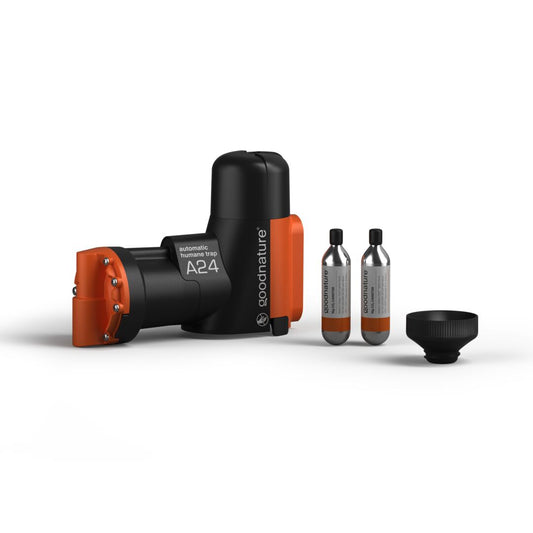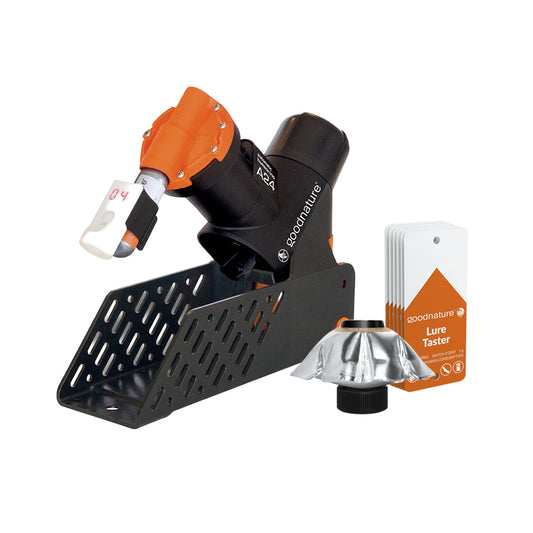
When you have a rodent problem, ridding your home of rats or mice can be a challenge. But when an infestation happens at your place of work—such as in a school, warehouse, or complex—the presence of rodents can become even more problematic.
Schools, warehouses, and other large buildings can comprise thousands or tens of thousands of square feet. They might contain hard-to-reach areas or rooms that are in disrepair, which makes it all the more likely that a small rodent problem will get out of hand before anyone notices. Worst of all, rodents can endanger the people within these facilities and can cause significant damage to products and equipment.
As you can see, it’s vital to keep rodents out of schools and warehouses. But unfortunately, the very nature of these buildings makes them ideal for mice and rats. Places like schools offer reliable access to food, water, and shelter. Warehouses and other complexes can also be attractive to rodents that eat material such as cardboard and packing supplies.
Preventing Rodent Problems
If you work in a school, warehouse, or other large building, it’s important to take a proactive approach to rodent control. This will ensure that any small problem with mice or rats will be resolved before it becomes unmanageable.
Here are our top four tips for preventing rodent problems in these types of buildings:
1. Use more effective traps.
When you think about rodent control, your mind probably goes immediately to poison or traditional snap and glue traps. Although these products have been used for decades, anyone who has ever used them knows that sometimes they’re not quite as effective as one would like.
Rat poison is dangerous to use in buildings with people, let alone in areas where food and water are present. If your facility is infested with larger rats, many snap and glue traps won’t actually catch them. Meanwhile, many rodents—especially small mice—can steal bait out of a snap trap without setting it off. Worst of all, these traps don’t always kill rodents right away, instead leaving them to suffer for hours or even days.
Luckily, newer rodent traps are a lot more effective than these older options. Look for a design that uses a CO2-powered shot, instead of glue or a snap, to ensure each rodent is killed immediately. These traps use lures specially formulated by bio-attractant specialists, so you don’t have to worry about your bait being stolen. A mouse or rat will trigger the spring-loaded striker as soon as it approaches the lure, killing it instantly.
2. Opt for traps that reset themselves.
One of the biggest problems with traditional snap and glue traps is how frequently they require attention. Let’s say you’re using a dozen snap traps in your facility’s basement. You’ll need to check them often to ensure that they haven’t been triggered and that their bait is intact. Otherwise, they’ll be useless until the next time you reset them. As you can imagine, this can quickly become burdensome when you’re in charge of protecting a school, warehouse, or other large building.
However, self-setting rodent traps do away with this problem altogether. After each CO2-powered shot, the trap automatically resets itself, getting ready for the next kill. Each CO2 canister can kill 24 rats or mice without any intervention. And the bio-attractant lures last up to six months and only require monthly checking. This can save you significant amounts of time and improve your odds of eradicating rodents, since the traps are always ready.
3. Install the right number of traps for your building.
It would take a lot of snap or glue traps to effectively secure a school, warehouse, or other large facility against a rodent problem. In fact, experts recommend that homeowners use a dozen or more such traps when they encounter a mouse or rat infestation. Imagine how many you would need to install and monitor for a building that is tens of thousands of square feet.
Self-resetting traps, on the other hand, can kill untold numbers of mice and rats. The traps can be placed anywhere, inside or outside, which enables you to proactively eradicate mice and rats before they become a problem.
4. Find a long-term solution, rather than a short-term fix.
Finally, consider the fact that snap and glue traps must be replaced frequently, while rat poison has to be replenished continually. However, self-resetting traps can be used for years, providing a much stronger return on investment and saving you time and effort.
Get Proactive
As you can see, snap and glue traps and rat poison present several problems that make them a bad fit for schools, warehouses, and other complexes. For a proactive, more effective approach, choose self-resetting traps like the Goodnature™ A24 Rat and Mouse Trap, and rest assured that the people and assets within your facility won’t be bothered by a rodent infestation.





